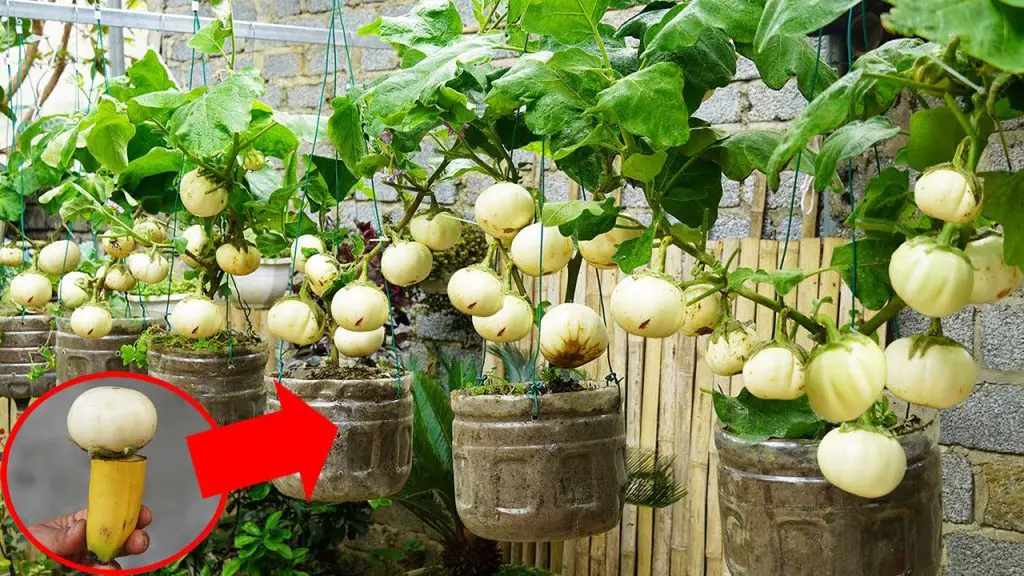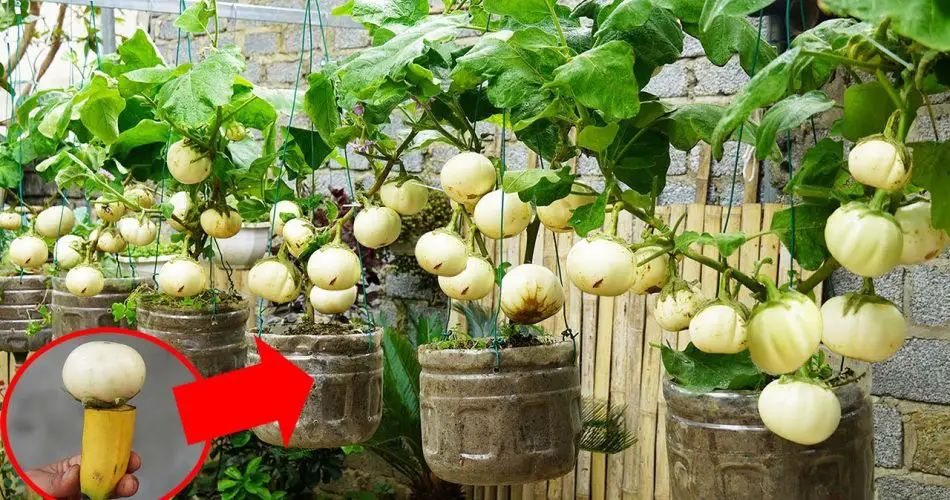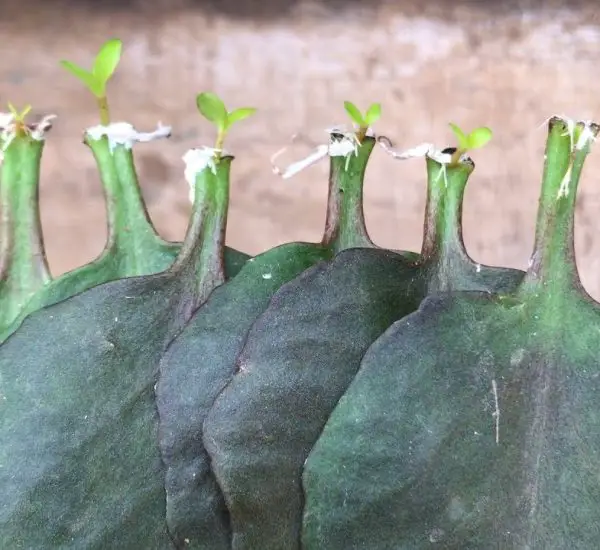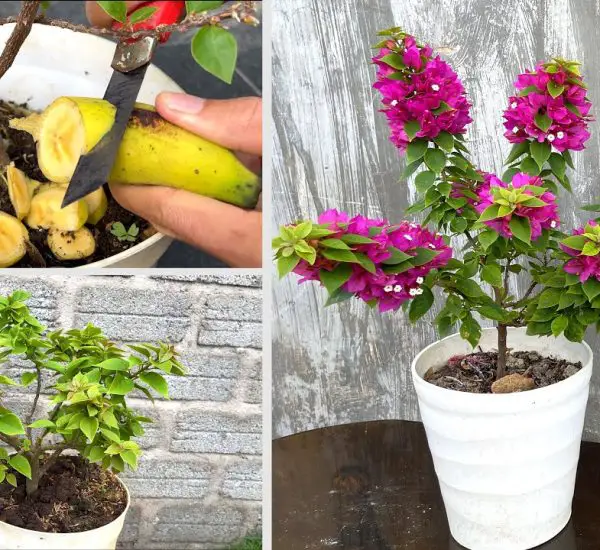If you’ve ever struggled with growing eggplants, you’ll be surprised at how easy and productive this unique method can be! With the right techniques, you can enjoy large, healthy eggplants without the need for a big garden. Whether you’re a beginner or an experienced gardener, this guide will show you how to achieve high-yield eggplant harvests with minimal effort.
🌱 Why Grow Eggplants This Way?

✔ Space-Saving – No large garden? No problem! This method works in small spaces.
✔ Fast Growth – Encourages quicker root development and stronger plants.
✔ High Yield – Produces more fruit per plant compared to traditional methods.
✔ Cost-Effective – Uses everyday materials for a budget-friendly garden.
✔ Less Maintenance – Requires less watering and fewer fertilizers.
💡 Tip: Eggplants thrive in warm temperatures and need at least 6 hours of sunlight daily for the best growth.
🛠️ What You Need
🔹 Healthy eggplant seedlings (or seeds)
🔹 Large container or plastic bottle (if growing in limited space)
🔹 Rich, well-draining soil (compost + garden soil)
🔹 Organic fertilizer (such as banana peels or compost tea)
🔹 Mulch or straw (to retain moisture)
🔹 Watering can (for regular hydration)
💡 Tip: If using plastic bottles, cut them in half and punch small drainage holes at the bottom for better airflow.
🌿 Unique Method for Growing High-Yield Eggplants
Step 1: Choosing the Best Eggplant Variety
🌱 Select a high-yield variety such as Black Beauty, Japanese Eggplant, or Indian Brinjal.
🌿 If growing in containers, opt for compact or dwarf varieties.
💡 Tip: Soak seeds in warm water overnight before planting to speed up germination!
Step 2: Preparing the Planting Area
🪴 If using containers, fill them with nutrient-rich soil mixed with compost.
🌍 If planting in garden beds, loosen the soil and add organic matter.
🚰 Ensure good drainage to prevent root rot.
💡 Tip: Adding crushed eggshells to the soil boosts calcium levels, preventing blossom-end rot!
Step 3: Planting the Eggplants
🌿 Plant seeds or seedlings about 12–18 inches apart for good airflow.
🛑 Bury the stem slightly deeper to promote stronger root development.
💦 Water thoroughly after planting.
💡 Tip: Placing a banana peel in the hole before planting gives a natural potassium boost for faster fruit production!
Step 4: Providing Proper Care
☀️ Place the plants in a sunny location (at least 6-8 hours daily).
💧 Water deeply but not too frequently – once the topsoil feels dry.
🌱 Add mulch or straw to help retain moisture and prevent weeds.
🥚 Feed plants with organic fertilizers like compost tea or eggshell powder every 3 weeks.
💡 Tip: Use Epsom salt (1 tbsp per gallon of water) to improve flowering and fruit production!
Step 5: Supporting Eggplant Growth
🌿 As eggplants grow, their branches become heavy with fruit.
🔹 Use wooden stakes or tomato cages to support the plant and prevent breakage.
✂️ Prune lower leaves to allow better air circulation and sunlight exposure.
💡 Tip: Pollinate flowers by gently shaking the plant or using a soft brush for better fruit set!
Step 6: Harvesting Your Eggplants
⏳ Eggplants are ready to harvest in 60–80 days.
🍆 Pick when the skin is glossy and firm, before they become overripe.
✂️ Use scissors to cut the stem, leaving a small portion attached.
💡 Tip: Frequent harvesting encourages the plant to produce more fruit!
🌟 Final Thoughts
With this simple yet unique growing method, you can enjoy high-yield, fresh eggplants in your own space! By following these easy steps, you’ll have healthy, delicious eggplants ready for your kitchen. Start your eggplant-growing journey today, and be surprised at how easy and rewarding it can be! 🍆✨



